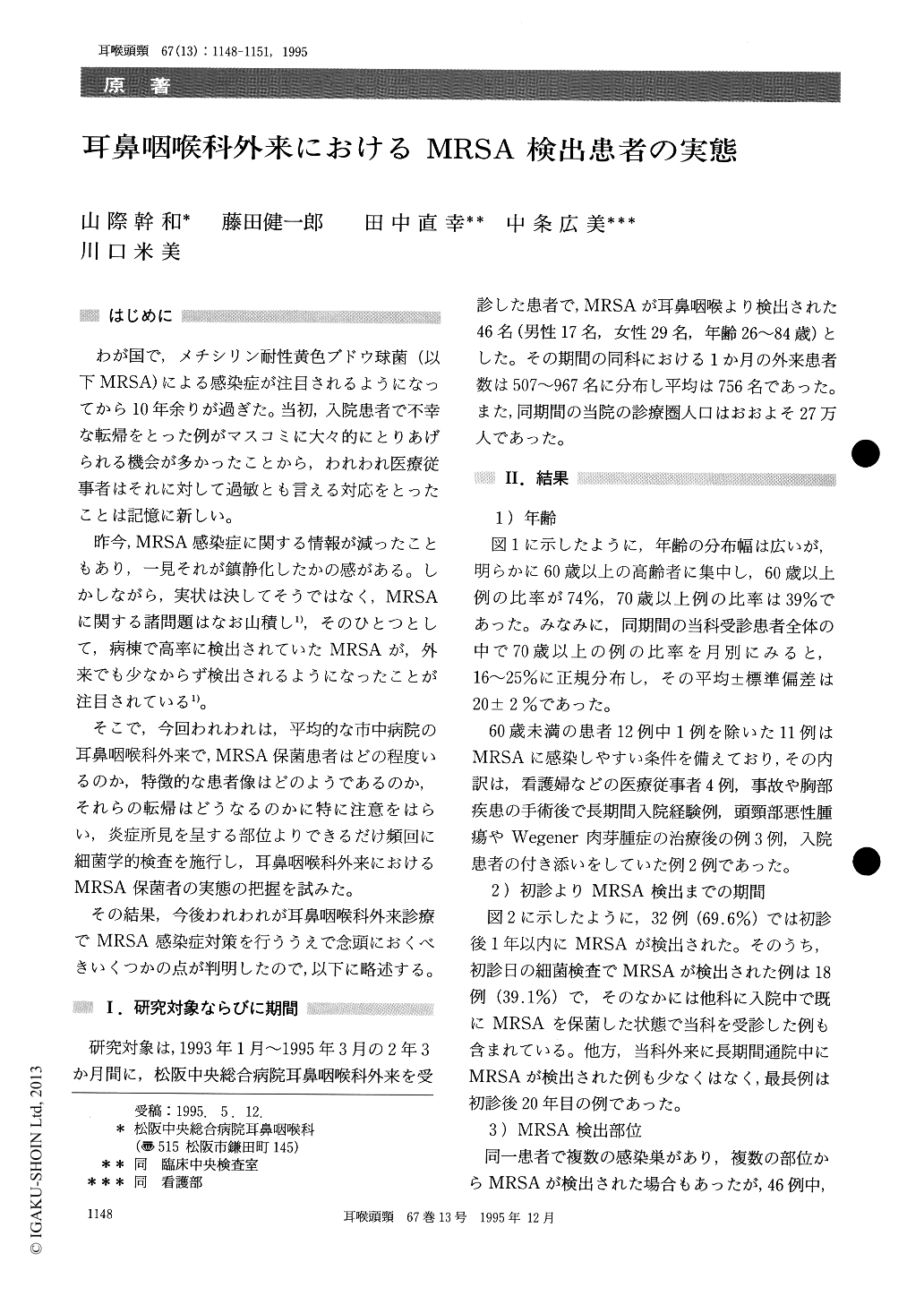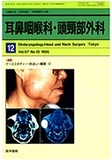Japanese
English
- 有料閲覧
- Abstract 文献概要
- 1ページ目 Look Inside
はじめに
わが国で,メチシリン耐性黄色ブドウ球菌(以下MRSA)による感染症が注目されるようになってから10年余りが過ぎた。当初,入院患者で不幸な転帰をとった例がマスコミに大々的にとりあげられる機会が多かったことから,われわれ医療従事者はそれに対して過敏とも言える対応をとったことは記憶に新しい。
昨今,MRSA感染症に関する情報が減ったこともあり,一見それが鎮静化したかの感がある。しかしながら,実状は決してそうではなく,MRSAに関する諸問題はなお山積し1),そのひとつとして,病棟で高率に検出されていたMRSAが,外来でも少なからず検出されるようになったことが注目されている1)。
そこで,今回われわれは,平均的な市中病院の耳鼻咽喉科外来で,MRSA保菌患者はどの程度いるのか,特徴的な患者像はどのようであるのか,それらの転帰はどうなるのかに特に注意をはらい,炎症所見を呈する部位よりできるだけ頻回に細菌学的検査を施行し,耳鼻咽喉科外来におけるMRSA保菌者の実態の把握を試みた。
その結果,今後われわれが耳鼻咽喉科外来診療でMRSA感染症対策を行ううえで念頭におくべきいくつかの点が判明したので,以下に略述する。
We treated 46 patients (17 male and 29 female, aged 26-84 years old) carrying MRSA at our ENT clinic between January, 1993 and March, 1995 and the results were summarized as follows. 1. Seventy-four percent of the patients wereolder than 60 years.
2 . Thirty-nine percent were MRSA positive at the bacteriological study on the first examination day. A few patients might catch MRSA inside our clinic.
3. MRSA was detected most frequently in the nasal cavity and then in the throat.
4. No specific antibiotics were used before MRSA detection.
5. MRSA disappeared without any intensive chemotherapy in some patients.

Copyright © 1995, Igaku-Shoin Ltd. All rights reserved.


